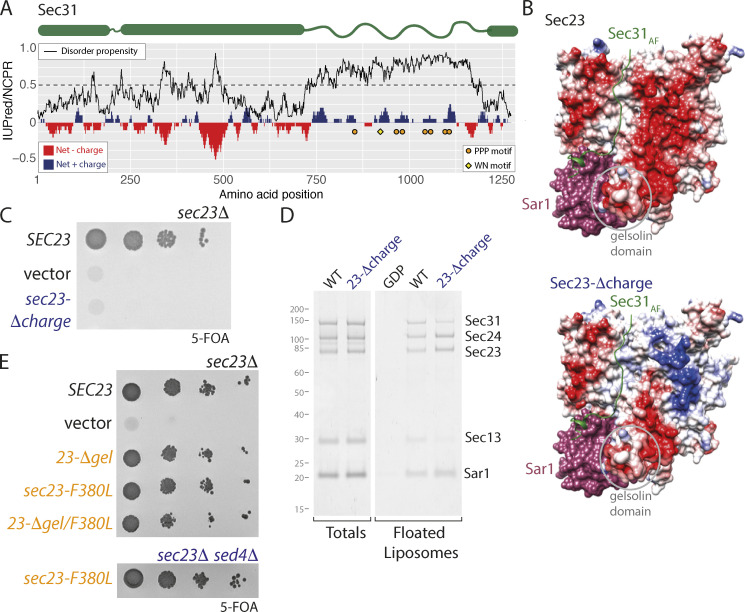Figure 4.
Charge interactions contribute to assembly. (A) Charge/disorder plot for Sec31. The black curve indicates predicted disorder propensity (IUPred); a value >0.5 (dashed line) suggests high propensity for being intrinsically disordered. Red/blue bars correspond to net charge per residue (NCPR) in a sliding window of 20 amino acids. PPP motifs are indicated by orange circles; the WN motif is indicated by yellow diamond. (B) Surface rendering of the crystal structures of Sar1 (pink) and Sec23 (colored according to electrostatic potential) bound to the active fragment (AF) of Sec31 (green), highlighting a negatively charged patch (red region) on the membrane-distal face, which lies to the right of the active fragment (upper panel). Substitutions in this region change the electrostatic potential in the Sec23-Δcharge mutant (lower panel). (C) Serial dilutions of sec23Δ strains transformed with the plasmids indicated reveals lethality of charge reversal of the negative patch. (D) Liposome flotation using the indicated proteins; recruitment of Sec13/Sec31 to liposomes coated with the Sec23-Δcharge mutant is reduced relative to WT. (E) Serial dilutions of sec23Δ or sec23Δ sed4Δ strains transformed with the plasmids indicated reveals no growth defects associated with the F380L mutation.

